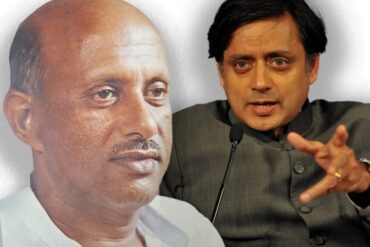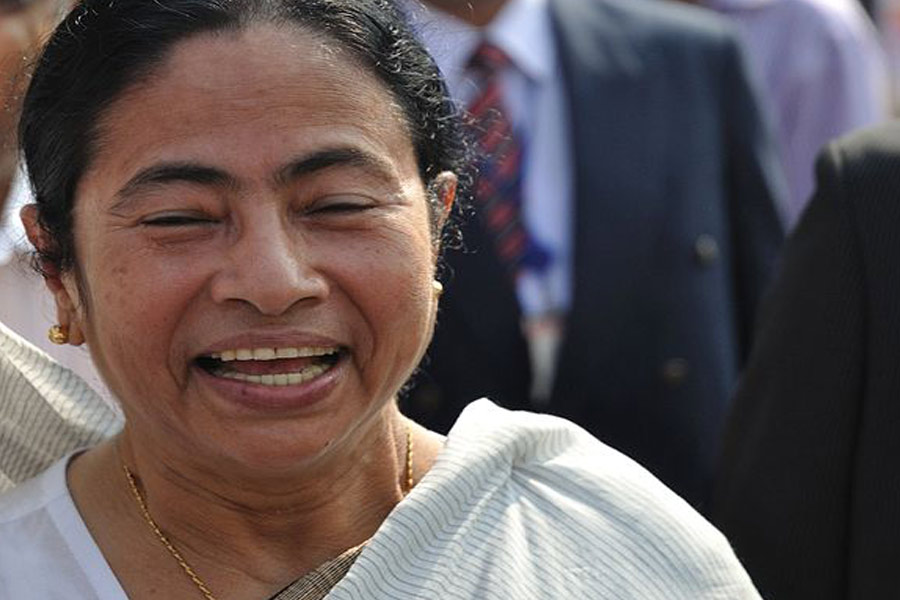Close on the heels of an ignominious fiasco in Maharashtra, came a stunning defeat for the BJP in the three by-elections to the West Bengal Assembly. It lost all the three seats including Kharagpur Sadar, which is one of the Assembly segments of the Medinipur parliamentary constituency won by the State BJP president Dilip Ghosh in the Lok Sabha elections earlier this year. The BJP candidate at Kharagpur Sadar was trounced by the Trinamool by a whopping margin of twenty thousand votes, much to the chagrin of Dilip Ghosh.
Before analysing the poll results in detail, one must put the record straight. The architect of BJP’s defeat was not the Trinamool Congress or its supremo, Chief Minister Mamata Banerjee. The architect of the defeat was none other than Amitbhai Anilbhai Shah, the BJP president and the Home Minister of India.
Shah’s constant threats and fulminations that he would introduce the National Register of Citizens (NRC) in Bengal, seek out and identify each and every ghuspethia (infiltrator) and throw them out, alienated the voters. Those whom he branded as ghuspethias are the millions of Hindus (and some Muslims) who had migrated to West Bengal after partition from the then East Pakistan and then from Bangladesh.
In the wake of the post-Partition communal holocaust, millions of Bengali Hindus had to leave East Pakistan and cross over into West Bengal, penniless and pauper, leaving their ancestral hearths and homes behind. The Congress Government of West Bengal of those days did nothing for their rehabilitation. They cleared jungles with their bare hands. They occupied vacant lands and set up human habitations known as “refugee colonies”. It was decades later that the State Government regularized these colonies.
When Amit Shah threatened to throw them out as ghuspethias, the mortal fear of being rendered homeless again in 70 years stared them in the face. They knew they cannot be deported to Bangladesh for Bangladesh will not accept a single man as an illegal infiltrator. They would, in fact, be made stateless. They would lose their hearths and homes again and would be left with no right to jobs or education for their children.
On the other hand, Mamata Banerjee was thundering from the rooftops that come what may, she would never allow NRC in Bengal, whatever the BJP might do elsewhere in the country. A huge chunk of Bengali voters who had fled from East Bengal, and their progeny, switched their loyalty from the BJP to the TMC. By constantly harping on the NRC, the BJP was shooting itself in the foot.
How potent was the fear of being declared a foreigner becomes obvious when one looks at the oscillation of votes from BJP to Trinamool in all the three constituencies. In Kharagpur Sadar, the TMC polled 34,086 votes (21.8 per cent) in the 2016 State Assembly elections. In this year’s Lok Sabha election, the TMC vote rose to 48,293 though its vote percentage declined marginally to 21.4 per cent. But in this week’s bye-election, the TMC vote jumped to 72,893 or 47.7 per cent. The BJP had polled 61,000 votes in 2016, 93,425 votes in the LS votes this year and just 52,040 votes now.
As regards Kharagpur, the TMC poll strategists showed great imagination and flexibility in their campaign. Kharagpur Sadar has a big railway colony in which the voters are mostly non-Bengali. The TMC workers made it a point to visit every single household in the colony and tell the family members that the BJP wanted to privatise the Railways. If the party had its way, there would be massive retrenchment and the employees would lose their jobs. Mamata Banerjee was opposing privatisation tooth and nail. The campaign worked.
Kaliaganj was a seat that the TMC never won. In the LS polls, the TMC got 62,133 votes (23 per cent) against the BJP’s 1,18,895 (44 per cent). This time the BJP vote plummeted to 95,014 or 43.67 per cent while TMC’s rose to 97,428 (44 per cent). Kaliaganj is a Bengali refugee-dominated constituency. In both Kharagpur and Kaliaganj, the TMC had to make up for the huge vote deficits it had suffered and then register a clear lead. But for the fear of NRC, this miracle could not have happened.
The story was no different in Karimpur where the Muslims constitute a sizable chunk of the electorate. The sitting MLA was TMC’s Mohua Moitra. This seat fell vacant on her election to the Lok Sabha. In the LS polls this year, the TMC got 87,513 votes (36.3) per cent against the BJP’s 73,73 (30.3 per cent). But in the by-election, there was a quantum jump in TMC’s vote: 1,02,633 (50.1 per cent) against the BJP’s 78,560 (38.4 per cent.)
At Karimpur, the BJP candidate was Jayaprakash Majumdar, vice-president of the State party. At one place during campaigning, he had to face angry villagers who were demonstrating against him. Then an unfortunate incident happened. Someone from the crowd kicked him and he fell into a bush. The video went viral. The BJP candidate expected this would generate a wave of sympathy for him among the voters. That did not happen and Majumdar had to kiss the dust.
Most pathetic has been the fortune of the Congress-Communist Party of India (Marxist) alliance. It came a distant third in every constituency, making it obvious that the two parties have ceased to be relevant in State politics. The two principal rivals today are the TMC and the BJP.
Both Congress and CPI-M have failed to induct new and young leaders. In the Bengal CPI-M, gerontocracy continues as before. Those leaders whose arrogance and haughtiness brought about the loss of power for the party in 2011 after 34 years of uninterrupted rule show no sign or willingness to retire. The party hardly organizes any mass movement, though there is no dearth of issues.
Some Congressmen believe that tying up with the TMC might have brought them a few seats. But the State Congress leaders share the same dislike for the Trinamool Congress and its leader as their Alimuddin Street friends do.
By arrangement with IPA







